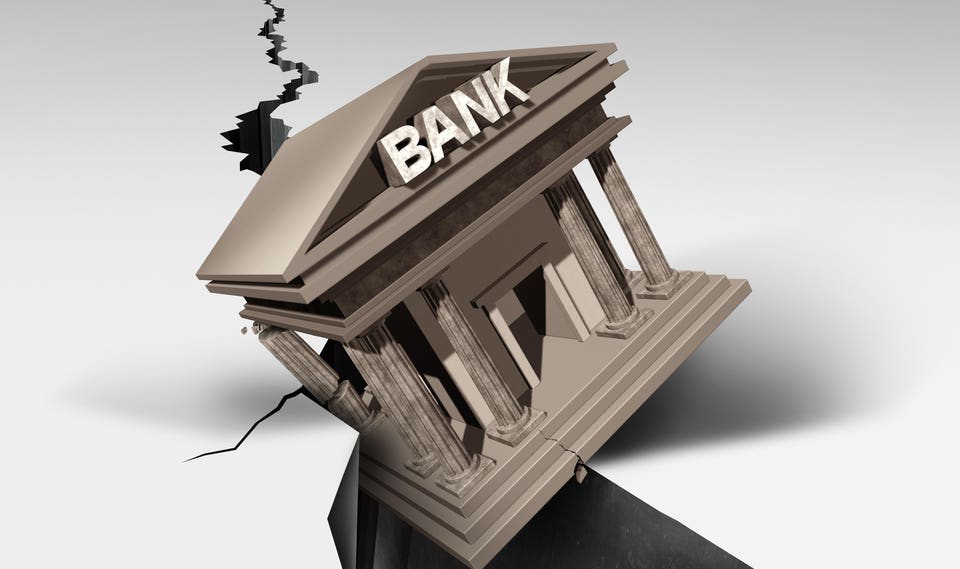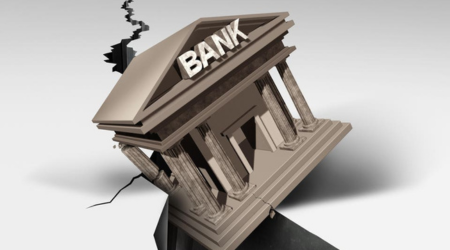Another bank has collapsed! Know why banks are sinking again and again?

Recently, the banking sector has been in turmoil once again. News of some banks collapsing has come to light, which has created an atmosphere of worry among the general public. Questions are arising in the minds of people that how do such big banks collapse? Is their money safe? What are the reasons behind the collapse of banks?
In this article, we will discuss various aspects of bank failure in detail. We will understand how banks work, when their financial condition deteriorates and what are its consequences. We will also know what happens to the customers’ money when a bank fails and how the government and regulators deal with this situation.
What does it mean when a bank collapses?
When a bank is unable to meet its obligations, it is considered to be insolvent. This means that the bank does not have enough money to return money to its depositors. In such a situation, the regulator (RBI in India) may decide to close the bank.
Table of Contents
To understand the process of bank failure, look at the following table:
| stages of bank failure | Description |
| Financial crisis | The bank has more liabilities than assets |
| Liquidity crunch | The bank runs out of cash |
| Panic of depositors | People start withdrawing their money (bank run) |
| Regulatory Intervention | Regulators like RBI review the situation |
| Closure of the bank | In critical situations the bank can be closed |
| Payments to depositors | Up to Rs 5 lakh guaranteed by DICGC |
| Reorganization or merger | Can be merged with another bank or restructured |
Why do banks fail?
- Bad loan policies: If the bank gives large scale loans without proper due diligence, NPAs (Non-Performing Assets) can increase.
- Excessive risk: Some banks invest more money in high-risk investments, which may lead to losses.
- Fraud and embezzlement: Fraud from inside or outside the bank can weaken the bank.
- Economic recession: The decline in the country’s economy also affects the banks.
- Lack of liquidity: If a bank does not have enough cash, it will not be able to meet its obligations.
Impact on Customers due to bank failure
When a bank collapses, the biggest worry is the customers. They fear for their money. But in India there are some safeguards to protect the interests of depositors:
- DICGC Insurance: Deposit Insurance and Credit Guarantee Corporation (DICGC) insures up to Rs 5 lakh of each depositor.
- RBI intervention: Reserve Bank of India tries to save the bank by timely intervention.
- Merger or restructuring: Sometimes a sinking bank is merged with a stronger bank.
Preventive Measures to prevent bank sinking
Several measures are taken to save the banks from sinking:
- Strict rules: It is necessary for banks to follow the rules made by RBI.
- Regular Audit: Banks are audited from time to time.
- Risk Management: Banks have to make proper strategies to reduce their risks.
- Capital Adequacy: Banks are always required to maintain a certain ratio of capital.
- Liquidity norms: Banks are instructed to maintain adequate liquidity.
Warning Signs of Bank Collapse
If you pay attention to these signs, you can predict the collapse of a bank:
- The bank’s share price is continuously falling
- The bank’s NPA is increasing
- The bank is constantly getting fined
- There are frequent changes in the top management of the bank
- Credit rating agencies may be downgrading the bank’s rating
Role of Government in bank collapse
When a big bank is on the verge of collapse, the role of the government becomes important:
- Financial aid: The government can provide funds to save the bank.
- Policy changes: Can make new rules to strengthen the banking sector.
- Public Trust: The government assures people that their money is safe.
- Merger Facility: The government can help in merging a sinking bank with a stronger bank.
Historical Examples of Bank Sinking
Many big banks have collapsed in history, from which we can learn:
- Financial crisis of 2008: Big banks like Lehman Brothers in America collapsed.
- Yes Bank Crisis: In 2020 Yes Bank was on the verge of sinking in India but RBI saved it.
- PMC Bank: Punjab and Maharashtra Co-operative Bank faced a crisis in 2019.
Economic Impact of Bank Failure
When a big bank collapses, it impacts the entire economy:
- Lack of credit: Bank failure makes it difficult to get a loan.
- Unemployment: Bank employees become unemployed.
- Market decline: The stock market may decline.
- Foreign Investment: Foreign investors can withdraw money from the country.
- Inflation: Inflation may increase in the economy.
Conclusion
Bank sinking is a complex process and there can be many reasons behind it. But the general public need not panic. Many safety measures have been taken by RBI and the government in India. The guarantee of up to Rs 5 lakh by DICGC is a big relief. Still, we should keep our money divided in many banks and keep an eye on the financial condition of the bank.
Disclaimer
This article is written for informational purposes only. Although bank failures do occur, the banking system in India is quite robust. RBI keeps a constant watch and takes timely action. Still, it is the responsibility of every individual to be cautious about their money.
Trending Topics
A trending topics blog offers a variety of current and engaging news updates across multiple categories. From exam vacancies, government jobs, and career advice to astrology insights, business trends, and stock market updates, it covers it all. Additionally, it keeps readers informed about daily lifestyle tips, sports highlights, national and world news, entertainment buzz, cybercrime awareness, and government schemes. This platform ensures a comprehensive mix of information for every interest.




No Comment! Be the first one.